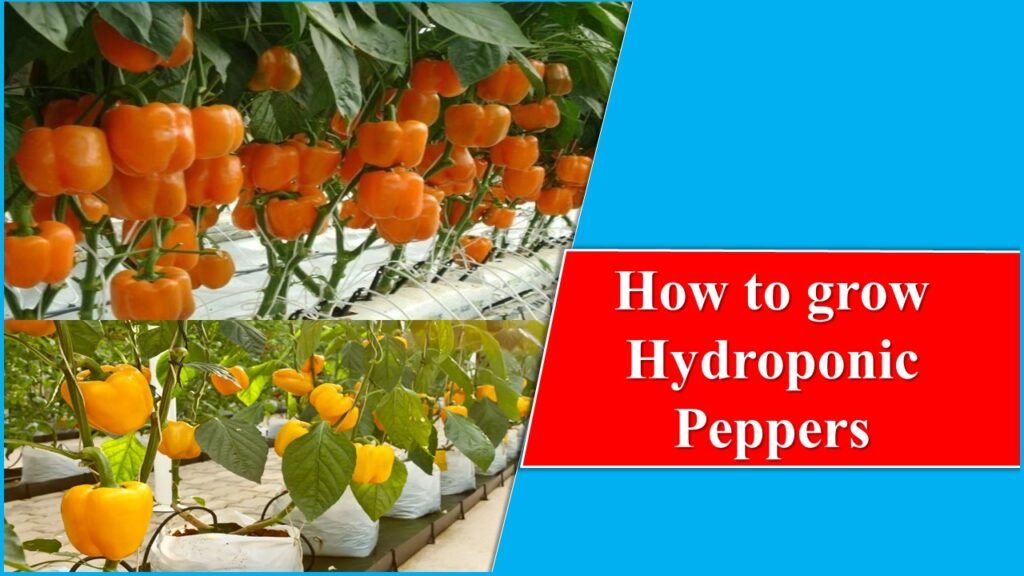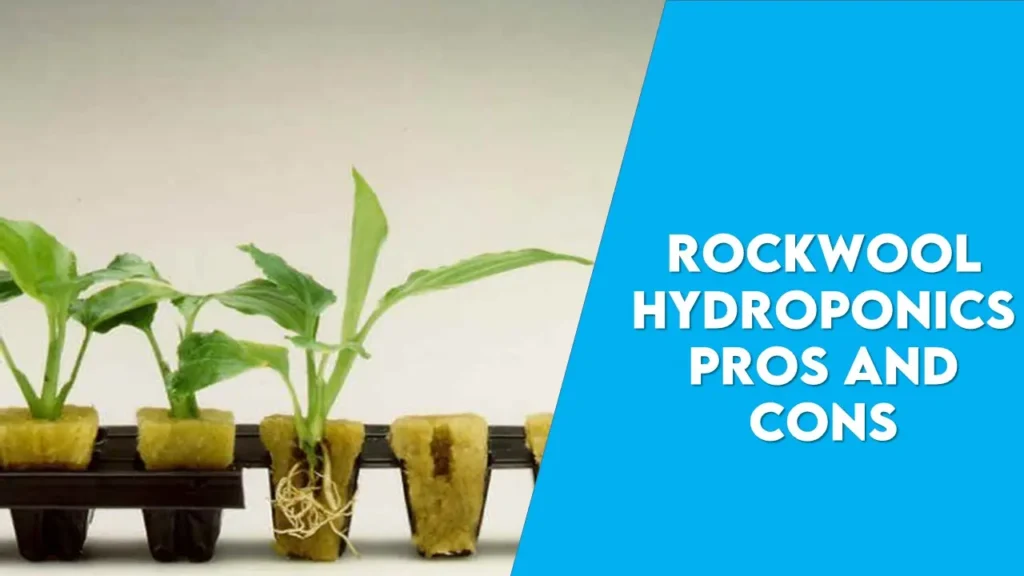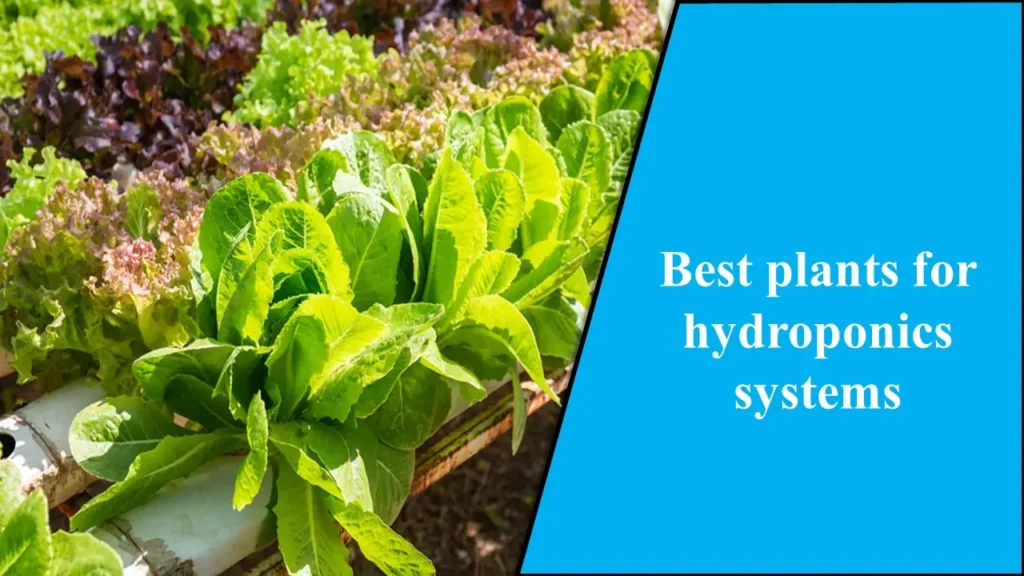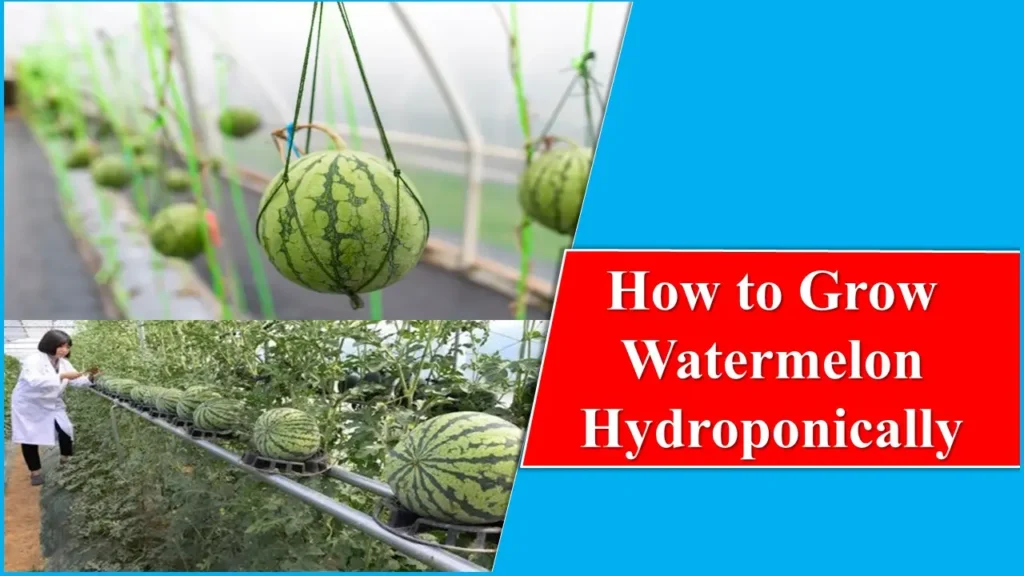How to Grow Basil Hydroponically: A Comprehensive Guide.
Basil, often called the ‘Herb of Kings’, has been cultivated for over 5,000 years, carrying deep religious, cultural, and medicinal significance worldwide. While the ancient Greeks saw it as a symbol of death and hatred, in many cultures, it represents prosperity and protection. Originating in Asia, it then expanded through spice routes to other parts of the world.
Due to its anti-inflammatory and anti-microbial effects, it is also an important ingredient in herbal medicines. The cinnamic acid present in this herb helps with digestion, regulates sugar levels, and improves the respiratory system. Therefore, it is well exploited through its use in tea, poultice, and essential oils. It is the star ingredient in Italy’s beloved pesto sauce. Italians believe basil tastes best when it’s fresh and organic, but can store-bought basil ever match that flavor?
For those seeking fresh, aromatic basil straight from their kitchen, hydroponic farming is the perfect solution. A soilless, space-efficient method, hydroponics allows you to grow basil year-round with minimal care, ensuring the best taste right at home. Let’s explore how to grow Basil Hydroponically.
Optimal Conditions for Hydroponic Basil
Basil is versatile and an easy-growing plant; you just need to maintain these conditions to get that ‘good harvest.’
| Optimum Temperature | 65°F–80°F, <50°F(Slow growth),>85°F(Risk of Bolting). |
| Optimum Light | 12–16 hours per day, 200–400 µmol/m²/s (PPFD)(Intensity) |
| Optimum Humidity | 50-65% |
| Growing Media | Coconut Coir, Rockwool, Perlite & Vermiculite Mix, Clay Pebbles (LECA), etc |
| Optimum pH | 5.5–6.5 |
| Ideal Nutrient Mix | CaNO3, MgSO4, and NPK |
| EC(Electrical Conductivity) | 1.0 – 1.6 mS/cm |
| TDS(Total Dissolved Solids) | Optimal Range: 700–1200 ppm ( Young Plants: 500–700 ppm)(Mature Plants: 900–1200 ppm) |
| Recommended Varieties | Genovese Basil, Sweet Basil, Thai Basil, Lettuce Leaf Basil, Cinnamon Basil, Dark Opal Basil, and Lemon Basil. |
Different stages :
| Stages | Time taken |
| Seed germination | 5-7 days after sowing |
| Transplanting | 3-4 weeks after germination |
| 1st harvest | 3-4 weeks after transplanting |
| 2nd harvest | 2-3 weeks after 1st harvest |
how to grow hydroponic basil: Step-by-Step
Choose the Hydroponics System.
Basil can be easily grown in any type of Hydroponics system, but NFT & DWC systems are commonly used systems with better efficiency. But if you are a beginner, it is ideal to use the Kratky Method. Ensure that the whole system is clean and everything is functioning properly.
Select the Seeds.
In a 4-inch diameter pot, it is recommended to use 5-15 seeds. Select the Basil based on your requirements for the final product. For example, use ‘Genovese Basil’ the classic Italian basil, to get that perfect for pesto, ‘Sweet Basil’ for a higher yield, ‘ Thai Basil for Asian Cuisines, ‘ Lettuce Leaf Basil’, in case you need a pinch of flavor, ‘Dark Opal’ for antioxidation, and ‘Lemon Basil’ fort that Citrusy fragrance in your Tea and Salads. You know your needs and taste so choose your seeds carefully.
Germinate the Seeds.
The seeds of Basil can be germinated through the traditional method of the ‘Paper Towel Method,’ but the best and most modern way of doing it is via ‘Rockwool cubes’ or ‘starter plugs.’ These are also helpful in acclimatizing the seeds and seedlings in a hydroponics environment. Basil enjoys humidity but its extreme susceptibility to ‘damping off’ can be a trouble in younger seedlings. So keep the humidity control on your hand, maintain a temperature between 60°F-75°F, and keep the EC around 0.50 mS/cm. Between 3-10 days the seeds will start germinating.
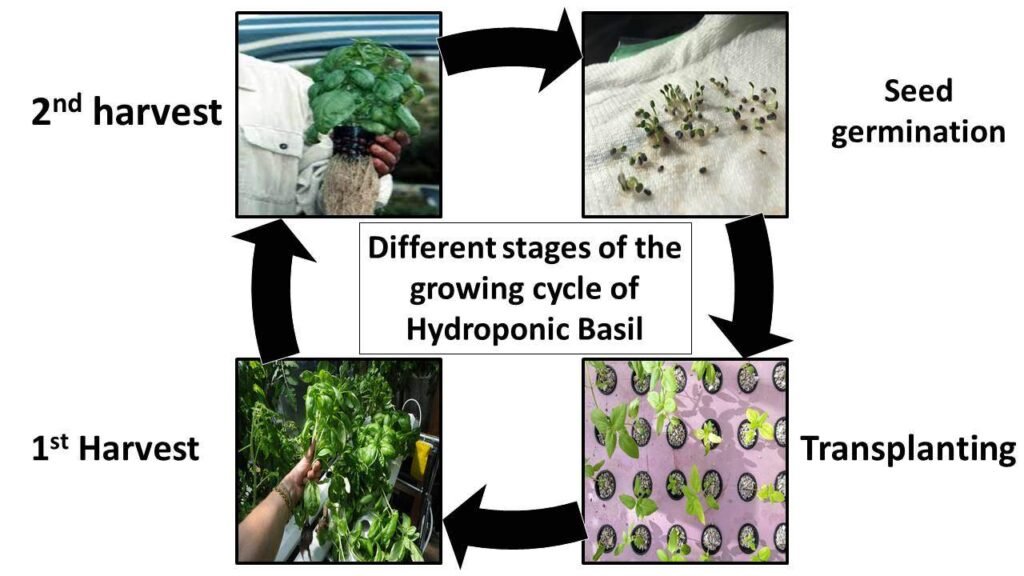
Transplant the Seedlings.
Once seedlings develop 2–3 sets of true leaves, transplant them into the hydroponic system. Ensure roots are in contact with the nutrient solution but do not submerge entirely (except in DWC systems). Put the seedlings in a net pot filled with growth medium(Coconut Coir, Rockwool, Perlite & Vermiculite Mix, Clay Pebbles (LECA), etc) for better absorption of nutrients. Keep the basil plants 8-10 inches apart to provide enough space for root growth and sunlight.
Prepare the light.
It is recommended to use a full spectrum light for basil cultivation in a hydroponics unit, in case you are not using natural sunlight. Keep the supply of light for around 16 hours. If you are using T5 fluorescent lighting bulbs, use the one with a 6500K frequency; I won’t recommend HID (Metal Halide or HPS), as they are powerful but produce heat, which might be harmful to the plant. To reduce bolting, you may reduce the number of hours of light accordingly.
Keep the light intensity at 200–400 µmol/m²/s (PPFD) for seedlings and 400–600 µmol/m²/s for mature plants. Put the LED lights 12–18 inches above plants and adjust height to prevent leggy growth or leaf burn. Under natural lighting, just provide 6-8 hours of direct sunlight.
To know if the system is getting enough light, Monitor leaf color:
- Pale leaves: Too much light exposure
- Stretching/leggy growth: Not enough light.
Maintain the Temperature.
Different growth stages need a different range of temperatures. And the night and day factor also plays a major role in it. To ensure proper growth follow this chart:
| Growth Stage | Day Temperature (°F) | Night Temperature (°F) |
| Seed Germination | 70–75°F | 65–70°F |
| Vegetative Growth | 65–80°F | 60–70°F |
| Mature Growth | 70–85°F | 60–70°F |
Keep an optimum temperature between 60°F-80°F.
Prepare the nutrient Solution for Hydroponic Basil
A good nutrient medium must have macronutrients and micronutrients in the right amount, as a nutrient deficiency is quite common in hydroponics units.
| NUTRIENT | Dosage (per 10L of water) |
| Calcium Nitrate (CaNO₃) | 1.5–2g |
| Magnesium Sulfate (MgSO₄) | 1–1.5g |
| NPK (5-10-20 or 3-12-6) | 1.5–2g |
| Micronutrient Mix (Chelated Fe, Mn, Zn, B, Cu, Mo) | 0.5g |
Note: Adjust dosages based on plant growth stage and water EC/TDS levels.
Maintain:
- EC: 1.0–1.6 mS/cm
- TDS: 700–1200 ppm
- pH Level: 5.5–6.5 (Optimal: 5.8–6.2)
Use pH up (potassium hydroxide) or pH down (phosphoric acid) as needed.
Change the nutrient solution every 7-10 days. Monitor the EC, TDS, and pH daily and adjust accordingly. Make sure the water is well-oxygenated and free of diseases.
Management of Hydroponically Grown Basil.
- Pruning: Pruning Basil is very important, as it grows fast vertically, and bolt of any interference is not done. Prune the Basil the first time once the plant reaches 6 inches in height. To prune the plant, use scissors to clip the main stalk just ⅛ inches above a growth node. Don’t cut below it, and continue the same process to maximize vegetative growth in the plant.
- Pinch off early flower buds to avoid bolting, and never cut more than 1/3rd of a plant at once.
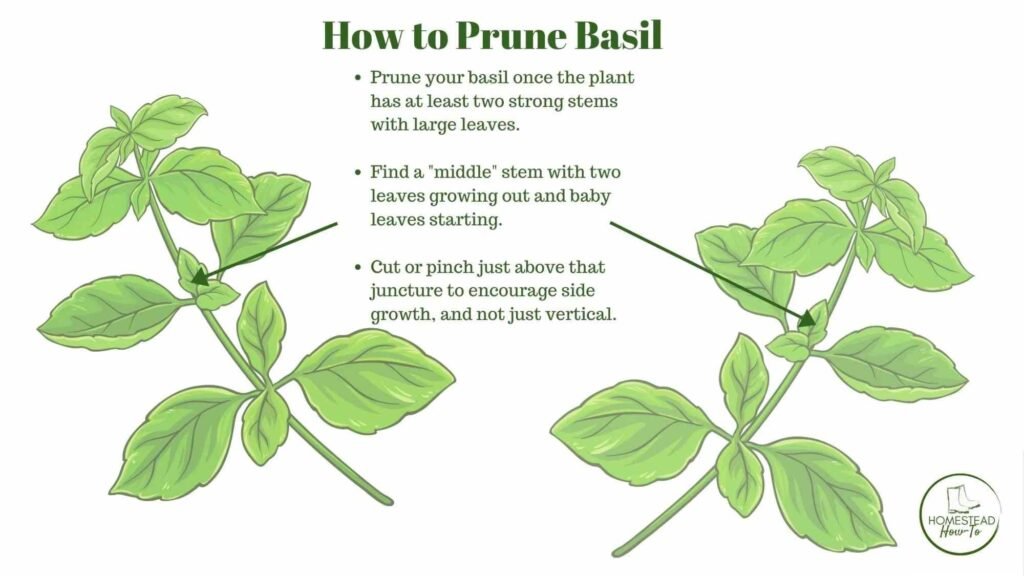
- Pest and Disease: As mentioned earlier, Basil is sensitive to damping and soilborne diseases, such as root rot. The presence of microbes can badly affect your plant in the long run. Parasites, like some nematodes, can also thrive in soil. However, diseases and pests are uncommon in a hydroponics system due to its environmentally enclosed nature. Even so, if disease occurs, use organic-based chemicals to treat the plants.
- Always cover the nutrient medium from lights to prevent alagal growth in the system, which can cause several blockages. The only common problem observed in hydroponics is that of nutrients. And with proper knowledge, it can be managed easily.
Harvesting.
- Number of Cuts:: First harvesting can be done after 3-4 weeks after transplanting (when plants have 6-8 pairs of leaves). Then, every 10-14 days, you can expect subsequent harvests. This way, you can continue harvesting for 3-4 months before replanting, which means 5-7 cuts before its productivity declines.
- Yield: Expect a 150-350g per plant over multiple harvests. A commercial setup can achieve up to 8-10 kg/m² annually under optimized conditions.
Conclusion
Growing basil hydroponically is a space-saving and eco-friendly way to produce the herb all year round. Within a controlled environmental factor, it thrives better than soil-grown ones, producing multiple harvests under minimal care. Whether you’re just a home gardener or a commercial grower, hydroponics offers an efficient and reliable way to cultivate fresh, organic basil.
So, why rely on store-bought basil when you can grow your own? Start your hydroponics journey today and experience the freshness of basil!
To learn more about this hydroponics journey, keep reading and leave comments for any confusion.
Join Our Hydroponics Growers Group!
Connect with fellow hydroponics enthusiasts, share your ideas, ask questions, and grow together as a community.
👉 Join WhatsApp Group

